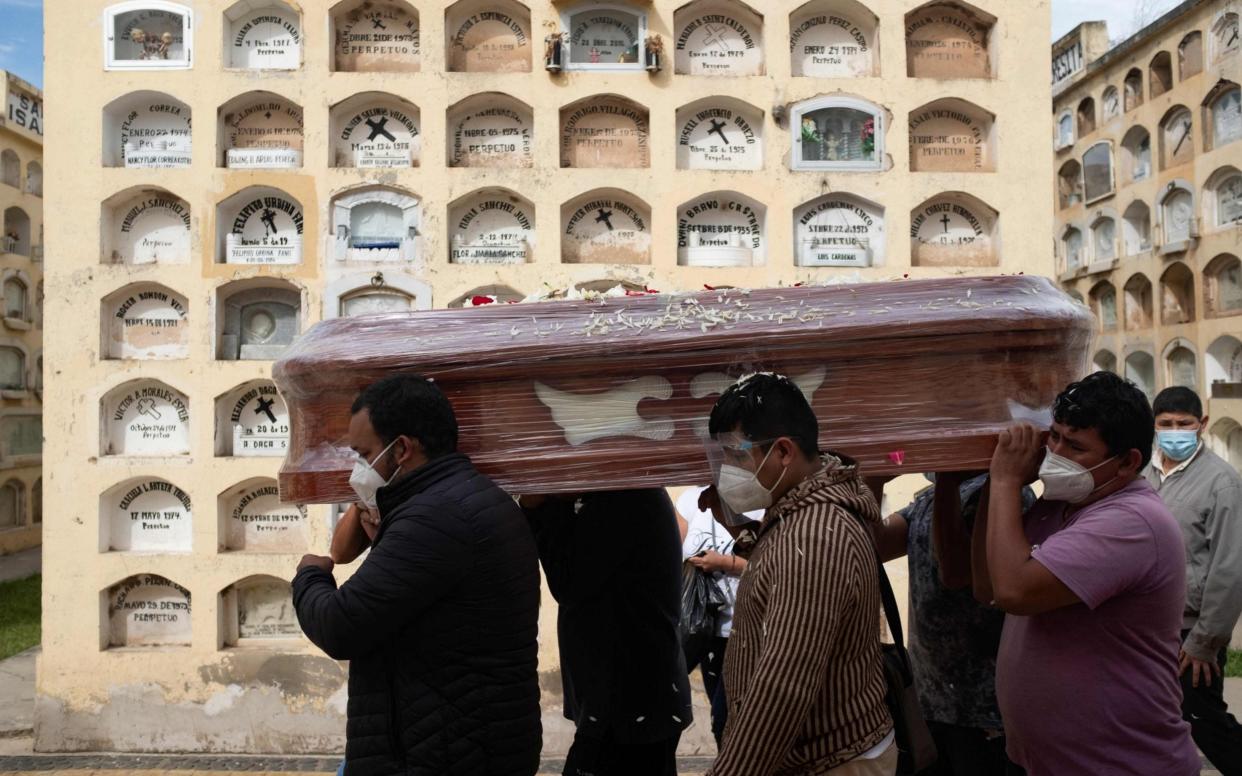Testing mistakes, underfunded hospitals and poverty: why Peru has the world's highest Covid death rate

Peru’s official Covid-19 death toll more than doubled this week after the government admitted it had been using a faulty methodology, making it the country with the highest Covid-19 mortality per capita in the world.
The figure jumped from just over 68,000 to 180,764 following pressure from public health experts to revisit the data.
The new number means the Andean nation has jumped from 13th to 1st in terms of the world’s highest per capita death rates, with 5,484 deaths per million inhabitants, according to an AFP count. Hungary is in a distant second place with 3,077 deaths per million.
The startling number is the result of a cocktail of government errors and pre-existing problems, including poverty and a severely underfunded healthcare system in the country of 33 million.
At first, then-President Martín Vizcarra moved decisively to halt the spread of the disease. Peru was only the second nation in Latin America, after El Salvador, to close its borders and go into lockdown in the middle of March last year.
Yet those efforts were soon undermined.

The health ministry gave up on contact tracing within the first month of the pandemic, for example, and Peru may also have been the only country to rely on antibody rather than molecular tests.
Those tests reveal whether someone has previously been infected, rather than whether they are currently contagious and should therefore quarantine.
Meanwhile, many Peruvians still live in cramped multigenerational housing, where self-isolating is impossible, and often with no fridge, meaning that residents have had to flout lockdowns to buy food on a daily basis. Roughly one in 10 of Lima’s 10 million residents still lacks running water.
By mid-2020, it was becoming apparent that Peru’s official pandemic mortality statistics were too low to be plausible, typically clocking in at around one-third of the country’s excess death figures, the number of people dying above historical averages.
Doctors and scientists had long criticized the health ministry for only officially counting fatalities if the patient had had a positive Covid-19 test result.
The new tally includes “probable” cases, such as patients who had coronavirus symptoms or were exposed to someone confirmed to have the disease.
Decades of underinvestment in the public healthcare system, on which most Peruvians relied, also came back to bite Peru in a big way.
Although the government increased the number of intensive care beds from just a few hundred at the start of the pandemic to nearly 3,000 today, many families here have been forced to attend to seriously ill relatives at home, including buying oxygen at speculative prices on the black market.

Despite arresting tens of thousands of people for violating the lockdown, the government has also been accused of failing to communicate simple public health messages.
Peruvians’ traditional disregard for frequently-corrupt authorities has also hindered the pandemic response.
“We are talking about people who know how you [can] get infected but who carried on anyway,” says César Cárcamo, an epidemiologist at Cayetano Heredia University, Peru’s leading medical school.
The country is now racing to vaccinate as many citizens as possible before a third wave, which is expected to sweep the country in the coming months. So far, more than 3 million doses have been administered and those in their low-60s are now getting jabs.
Peru may not be the only country to have underestimated its Covid-19 fatalities.
Last month, University of Washington researchers calculated the true global death toll to be 6.9 million, more than twice the aggregated total of official national figures of 3.3 million.

